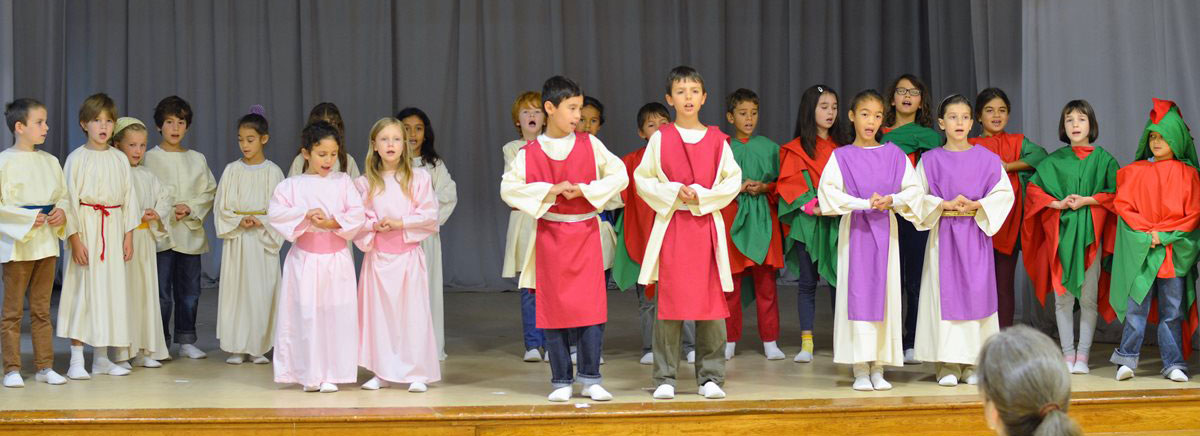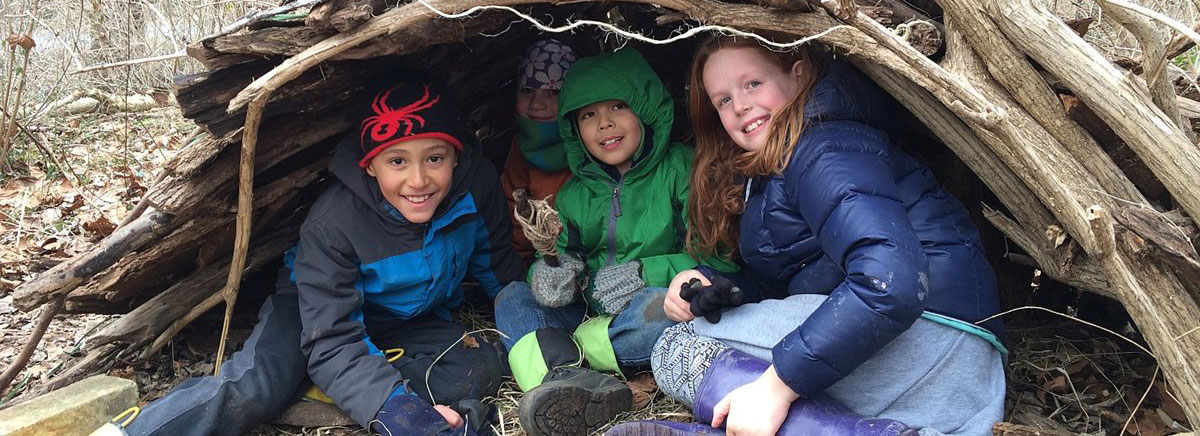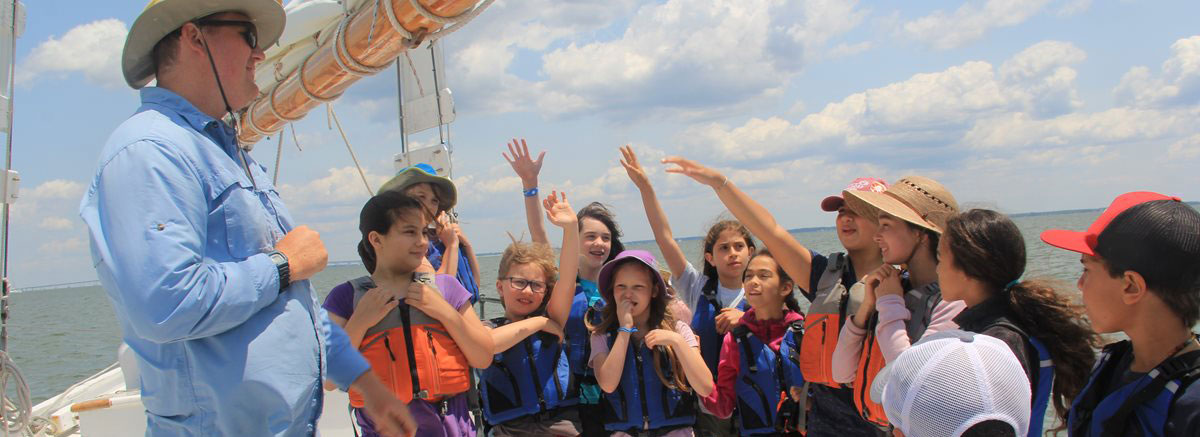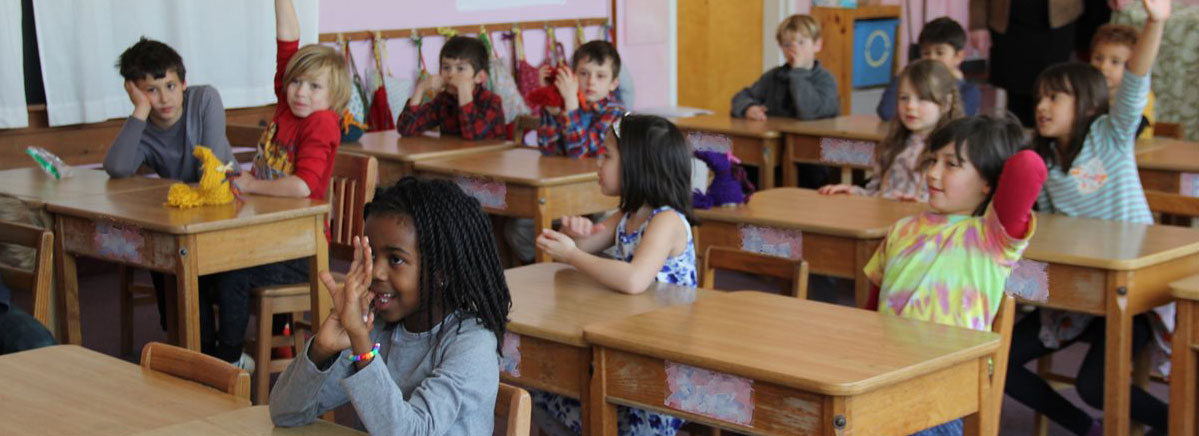Lower School
A Developmental Approach
With Rudolf Steiner’s work in child development at its core, the Lower School curriculum at the Washington Waldorf School is perfectly tailored to meet the changing needs of your child at each step of their journey through school.
Grade by grade, the Lower School curriculum follows the development of the child, considering their physical, emotional, and intellectual growth. Subjects such as geography, history, geometric drawing, perspective drawing, and the sciences are introduced in a way that meets the inner questions a child holds as they grow and change.
A few examples:
- Around the age of nine, many children become sensitive to their own separateness from their family and to their individual vulnerability within a larger world. Particularly at this age, children love to figure out how they would build a structure to keep themselves protected from the weather, and the 3rd grade curriculum includes very practical experiences that give a child confidence in farming and house building, on how to survive on their own.
- The fiery nature of adolescence is reflected in the chemistry of combustion in grade seven.
- Teenagers need for independence and their inclination toward rebellion is mirrored in the study of historic revolutions. These connections make the educational experience relevant, engaging, and satisfying.
Targeted Curriculum, Profound Understanding
Grade 1
History and Literature
Fairy and folk tales from around the world; nature stories; poetry
English and Grammar
Pictorial introduction to the alphabet; reading and writing through the study of sight words, phonemes, and word families
Mathematics
Qualities of numbers 1–12; introduction to the four operations; basic geometric shapes and freehand geometric drawing
Geography and Sciences
Study of nature and the seasons through observation; nature walks; activities outdoors in all weather
Spanish
Verses, songs, and games (vocabulary parallels main lesson subjects)
Art
Beeswax modeling; watercolor painting; drawing; form drawing
Music and Performing Arts
Singing and flutes in the pentatonic scale; class play; speech
Handwork
Making knitting needles; knitting
Eurythmy
Moving in the circle accompanied by pentatonic music on piano
Movement Education
Rhythmic circle games; jump rope
Note: Each class teacher approaches this general curriculum guide with the freedom to shift and cater it to the particular group of students he or she is teaching.
Grade 2

History and Literature
Fables and folklore; legends of "holy" people from various cultures who have made a difference; Native American stories; poetry
English and Grammar
Beginning composition skills; grammar; directed reading groups; reading
Library
General library use
Mathematics
Arithmetic in the four operations; calendar; time
Geography and Sciences
Natural life cycle explored through nature and animal stories; activities outside in all weather
Spanish
Verses, songs, and games (vocabulary parallels main lesson subjects)
Art
Form drawing; beeswax modeling; watercolor painting; drawing; clay modeling
Music and Performing Arts
Folk music; singing and flutes in the pentatonic scale; class play; speech
Handwork
Knitting and purling
Eurythmy
Fables and animal stories; mirror forms; movement to piano
Movement Education
Games; jump rope; running; coordination activities; throwing and catching
Note: Each class teacher approaches this general curriculum guide with the freedom to shift and cater it to the particular group of students he or she is teaching.
Grade 3

History and Literature
Hebrew Bible stories; Farming and pioneering stories; Native American stories; stories of indigenous peoples around the world; poetry
English and Grammar
Composition; grammar; editing; poetry
Library
Fiction and non fiction
Mathematics
Long division; prime numbers and factoring; arithmetic continued; geometric forms continued; measurement
Geography and Sciences
Practical studies; farming and gardening; composting; grains; the growing cycle; study of shelters and house building in various environments; sheep sheering, washing, carding, dyeing and spinning wool; where things come from
Spanish
Verses, songs, and games (vocabulary parallels main lesson subjects)
Art
Beeswax modeling; watercolor painting; form drawing; clay modeling; fiber arts
Music and Performing Arts
Singing and C-flutes in the major scale; musical notation and dictation; rhythms; percussion instruments; solfège; singing in rounds; class play; speech
Handwork
Crocheting
Eurythmy
Alphabet gestures; “spelling” simple words or names; major and minor movements in musical gesture.
Movement Education
Continued jump rope activities; tag games and relay races; begin tumbling; begin circus arts; throwing and catching games.
Note: Each class teacher approaches this general curriculum guide with the freedom to shift and cater it to the particular group of students he or she is teaching.
Grade 4

History
Local and regional history of Maryland, Virginia, and Washington, DC
English and Grammar
Composition; letter writing; grammar; research; animal reports
Literature
Norse sagas; and poetry; Native American stories; Kalevala; poetry.
Library
Animal research projects
Mathematics
Fractions; factoring continued; geometry; complex four-part symmetry; Celtic knots
Geography and Sciences
Animal studies; local geography (Maryland, Virginia, and Washington, DC)
Spanish
Conversation; grammar; reading; writing short compositions
Art
Colored pencil drawing; pastels; animal drawings; woven form drawing (Celtic knots); maps; watercolor painting
Music and Performing Arts
Violin or cello; C-flutes; reading and musical notation; part singing; class play
Handwork
Cross-stitching
Woodwork
Carving; hand whittling
Eurythmy
Crossing forms in the space; concentration and rod exercises
Movement Education
Circus arts; games; rhythmic exercises
Note: Each class teacher approaches this general curriculum guide with the freedom to shift and cater it to the particular group of students he or she is teaching.
Grade 5

History and Social Studies
Ancient India, Persia, Mesopotamia, Egypt, Greece, and China; Hinduism; Buddhism
English and Grammar
Grammar; active and passive voice; book reports
Literature
Greek myths; scenes from ancient history; tall tales; biographies
Library
Dewey Decimal System.
Mathematics
Decimals; geometric forms; Pythagorean theorem
Geography and Sciences
Botany; biomes; US and North American geography; unusual animals; insects
Spanish
Speaking; reading; writing; grammar; Mexico; festivals.
Art
Freehand geometric drawing; watercolor painting; maps; drawing for botany; nature sketches; clay modeling
Music and Performing Arts
Class play; Orchestra; singing in parts; Grades 5 & 6 Chorus
Handwork
Advance 3D knitting; projects in the round
Woodwork
Carving bowls; symmetry; use of gouges, mallets, etc.
Eurythmy
Five-pointed star; rod exercises continued; gestures of musical tones; major scales
Movement Education
Greek games (javelin, discus, ring wrestling, long jump, running); circus arts; relays
Note: Each class teacher approaches this general curriculum guide with the freedom to shift and cater it to the particular group of students he or she is teaching.
The Class Teacher
At WWS, each class has a core teacher that stays with them for multiple years. Especially in the younger grades, this "class teacher" is the primary teacher who works with the children. This continuity enhances the children’s learning in both academic and social aspects and enables the class teacher to develop a deep understanding of the child as an individual and the class as a community.
In contrast with the traditional model in which an elementary school teacher teaches the same curriculum year after year but must “learn” and grow to understand and cater his or her teaching style to a new group of students every year, the Waldorf school approach allows the class teacher to deepen his or her understanding of the individual needs and nuances of their class and model the act of learning and preparing new curriculum year after year.
Main Lesson
Each day begins with the class teacher and a lively two-hour main lesson which concentrates on one subject for a period of three to four weeks. These “Main Lesson Blocks” vary in their subject matter: math, science, history, English, and geography are all taught in this block format.
This intensive, concentrated focus on a subject over several weeks builds a strong connection to the subject, and because the main lesson is a longer class period, there is time to explore subjects through a variety of activities such as drama, music, visual arts, movement, and writing. This multifaceted approach allows children to engage fully in the act of learning not just with their heads, but also with their heart and their hands.
Our goal is to build capacities, not just skills — capacities for greater learning, critical thinking, and problem-solving for the future that awaits each of our students.
Main Lesson Books
During each main lesson block, the students create their own Main Lesson Book. These beautiful books are organized, ongoing records of the students work and are filled with observations, illustrations, diagrams, stories, and essays. This act of generating one’s own artistic “textbook” helps foster a deeper sense of understanding and ownership of the content and subject matter.
Subject Classes
In addition to the daily Main Lesson, the student’s day is enriched with a variety of special subject and skills classes often taught by teachers who are experts in their fields. The curricula for these classes also moves in harmony with the development of the children and includes Spanish, handwork, woodwork, Eurythmy, instrumental and vocal music, games and outdoor education, form drawing, and art.
Sports
Competitive sports programs begin in the fifth grade. Students may participate in cross-country (fall), soccer (fall), basketball (winter), and baseball or softball (spring). The "56-ers" teams carefully introduce fifth and sixth graders to team sports, stressing teamwork, fair play, and skill development.
Middle School and High School teams compete against other area independent schools as part of the Potomac Valley Athletic Conference. Membership on sports teams is open to all students, and participation is encouraged. Read more about our athletic program.
Class Trips and Field Trips
Each grade takes at least one trip during the school year. These trips into the woods and mountains are designed to meet the children’s developmental level, help them gain self-confidence, and encourage their connection to the natural world and to each other. There are also a variety of local field trips and excursions related to each grade’s curriculum.
- Overnight trips begin in third grade with a trip to Hawthorne Valley Farm in upstate New York where students participate in the farm activities, often witnessing the birth of a new calf.
- In the fifth grade, students travel to a Waldorf school within our region to participate in an Olympiad competition with fifth graders from other Waldorf schools.
- In the 7th grade, the students take a more extensive camping trip that includes nature experience often combined with a ropes course and team building exercises.
- The 8th grade traditionally takes a week-long trip that includes a wilderness experience and a cultural component.
Media and Technology
WWS is committed to fostering students’ capacities for imagination, warm interaction, independent thinking, and healthy feeling. We discourage media exposure from the daily experience of our young students. Children are deeply affected by images, and they carry these images into their play and conversations, which then influences other children as well.
Beginning in the Middle School, students are introduced to media and technological devices in the classroom with a focus on students becoming healthy, ethical, and knowledgeable digital citizens. Keyboarding, word processing, and computer research skills are also introduced and developed at this time. Lower School students may not use phones or other devices during the school day, except as part of technology class. By partnering with our parents, we encourage our students to be mindful digital citizens and to view and use technological devices as useful tools.
Middle School
In order to ensure that students experience a variety of teaching styles and receive comprehensive academic preparation for high school, the team of teachers widens as the students grow older. Starting in the 6th grade, the students are taught mathematics and English by specialists. In the 7th and 8th grades, some of the main lessons will also be taught by teachers other than the class teacher. An active outdoor education program which combines the 7th and 8th grades is offered and includes off-campus trips for activities such as rock climbing, canoeing and kayaking, orienteering, biking, and ice skating.
